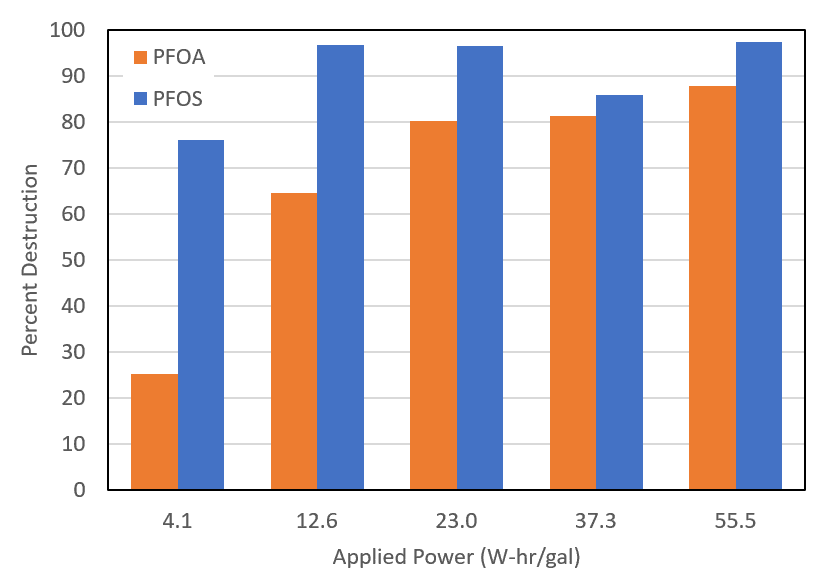PFAS Destruction in Landfill Leachate: A case study of a Michigan-based Centralized Waste Treatment Facility
Client Challenges
• High PFOA levels exceeding 1,200 ng/L
• PFOS exceeding 800 ng/L
• Current PFOS & PFOA regulations
• Concerns around upcoming CERCLA
designation of PFOA and PFOS as
hazardous material
Key Takeways
• Destruction of PFAS & other organic
compounds using full scale reactor
•PFOS destroyed to below detection limits;
PFOA destroyed to below regulatory limits
• Low power usage; less than 50 W-hr/gallon
Percent Destruction x Applied Power

Project Summary
Whereas Aclarity destroys PFAS compounds forever, current PFAS remediation strategies merely displace PFAS. Common tactics involve removal of PFAS using technology such as Granular Activated Carbon (GAC) and a second disposal step, usually sending carbon filters to a landfill. Other times liquid waste from other removal technologies is disposed of using deep well injection or incineration.
Due to the ubiquity of PFAS in consumer products and the exceptional physical, chemical, and biological stability, PFAS is found at high concentrations in landfill leachate – the water is produced when precipitation lands on the piles and percolates through the soil and compacted trash. While PFAS may be found at parts per trillion (ppt or ng/L) concentrations in surface waters, PFAS concentrations in landfill leachate can exceed parts per billion (ppb or μg/L) concentrations. Combined with high levels of salts, ammonia, heavy metals, and natural organic matter, treating landfill leachate by conventional treatment techniques is expensive and merely transfers the PFAS from one phase (the leachate) to another, such as activated carbon.
Aclarity's electrochemical oxidation system that not only degrades PFAS but can also destroy other components in leachate including ammonia and other organic compounds. While separation and disposal of leachate by conventional methods can carry excessive costs and risks Aclarity's solution destroys PFAS forever, breaking the PFAS cycle back to the environment.
